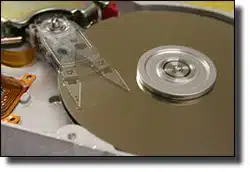Absolute zero disk activity? No, I don’t believe you can accomplish this in any practical way.
I have at least one idea that will get you about 90% of the way there, but I just don’t think the extra effort that you’re going through is going to help your hard drive.
I’ll explain.
Move the Windows temporary files into RAM
When Windows is running, there are two folders on your machine for temporary files: one is for Windows itself and the other is for your user account.
Some Windows processes place files in the temporary folders, and as a result these files are continually in use. Some of the disk activity that you’re seeing is simply due to Windows itself reading and writing to those files more-or-less constantly as it runs.
Moving the Windows temporary files into RAM requires that you have enough RAM. You’ve already become dependent on the amount of RAM that you have by removing the paging file. Moving the files will make things worse because it’s actually going to reduce the amount of RAM available to Windows.
You’re going to trade in some of that RAM for something called a RAMdisk.
Using RAM as disk
Get and install what’s called RAMdisk software. This will take a portion of your computer’s RAM and make it appear as if it were a hard drive.
Now, I can’t say how big you should make it. The size that you ultimately settle on might be determined by trial-and-error; you want the dedicated RAM to be big enough to hold the temporary files that it needs to hold while you’re running Windows, yet small enough that it’s not impacting the overall RAM that the system has available.
Then, you can change the temporary folder settings for both Windows and your login accounts to that newly created RAM drive. I have an article, “How to change the location of Windows temporary files?” that should walk you through that.
Like I said, it will probably get rid of about 90% of the activity that you’re seeing, but I’m just not convinced that doing this will help.
 Hard drives wear out
Hard drives wear out
Your question is based on the assumption that using the hard disk wears it out.
While your hard disk will wear out eventually, you have to remember that hard disks fail for many other reasons: overheating, getting bumped, power problems, manufacturing defects, and more. The only way to avoid hard drive failure is to turn the computer off completely1.
Besides, the amount of disk usage that you’re trying to remove is insignificant when it comes to impacting your disk’s lifespan.
Your hard disk will die. It’s not a matter of if, but when.
The best thing that you can do (and you can probably see this coming) is to back up. There is never a reason to lose massive amounts of data if your system is properly backed up.
I realize that you are resource and revenue constrained, but there are free programs out there that will back up your machine. I would much rather that you invest your time in researching that than trying to remove that last bit of disk activity.
 Hard drives wear out
Hard drives wear out
Hello Leo. Not on the subject but . . . this is the page wherein lies a problem, perhaps many others do too. I have an old (flat screen) monitor and old screen resolution (Windows XP) so I often find that I have to scroll to the right to read a whole page. No problem when a scroll bar is provided, but here there isn’t one. Seeing that the future is in widescreen – God knows why, but it is – I keep my Zoom size set to 75% which for most pages is still practically readable. (Why is everyone going for such small print nowadays – ingredient lists, C.D. production credits and almost everything else?) However, you’re exceeding your limit Leo, and I can’t reach the right hand side of the screen. Changing Zoom to 50% – though why should I have to do that? – brings it easily within reach but definitely too small to read. I could change my screen resolution but I don’t think my monitor will take it. . . . Oh well, didn’t want to read it anyway. Must get back to finding out what I was doing when I had a life. David.
David,
Are you talking about the home page on Ask Leo! It’s the only page that doesn’t reform to browser size.
It sounds like his browser window might be bigger than the size of his screen, so he can’t scroll all the way to the right edge.
@David: This site doesn’t have a scroll bar because it’s responsive to the browser size — meaning it re-sizes and re-flows content based on the window size. If your browser fails to properly adapt the web page to the window size, you may want to check out another browser — all modern browsers do this properly.